- News
- Reviews
- Bikes
- Accessories
- Accessories - misc
- Computer mounts
- Bags
- Bar ends
- Bike bags & cases
- Bottle cages
- Bottles
- Cameras
- Car racks
- Child seats
- Computers
- Glasses
- GPS units
- Helmets
- Lights - front
- Lights - rear
- Lights - sets
- Locks
- Mirrors
- Mudguards
- Racks
- Pumps & CO2 inflators
- Puncture kits
- Reflectives
- Smart watches
- Stands and racks
- Trailers
- Clothing
- Components
- Bar tape & grips
- Bottom brackets
- Brake & gear cables
- Brake & STI levers
- Brake pads & spares
- Brakes
- Cassettes & freewheels
- Chains
- Chainsets & chainrings
- Derailleurs - front
- Derailleurs - rear
- Forks
- Gear levers & shifters
- Groupsets
- Handlebars & extensions
- Headsets
- Hubs
- Inner tubes
- Pedals
- Quick releases & skewers
- Saddles
- Seatposts
- Stems
- Wheels
- Tyres
- Health, fitness and nutrition
- Tools and workshop
- Miscellaneous
- Cross country mountain bikes
- Tubeless valves
- Buyers Guides
- Features
- Forum
- Recommends
- Podcast
review
£2,299.00
VERDICT:
Race orientated titanium frame that's as fun as it is comfortable; a blast whether you're going flat out or taking in the scenery
Weight:
8,490g
Contact:
At road.cc every product is thoroughly tested for as long as it takes to get a proper insight into how well it works. Our reviewers are experienced cyclists that we trust to be objective. While we strive to ensure that opinions expressed are backed up by facts, reviews are by their nature an informed opinion, not a definitive verdict. We don't intentionally try to break anything (except locks) but we do try to look for weak points in any design. The overall score is not just an average of the other scores: it reflects both a product's function and value – with value determined by how a product compares with items of similar spec, quality, and price.
What the road.cc scores meanGood scores are more common than bad, because fortunately good products are more common than bad.
- Exceptional
- Excellent
- Very Good
- Good
- Quite good
- Average
- Not so good
- Poor
- Bad
- Appalling
One hundred and seventeen miles after I'd got on the Pretorius Outeniqua Disc I knew I'd chosen the right bike that morning. Just over six and a half hours of climbing, descending, a bit of through-and-off and some rough country back lanes meant a real all-rounder was needed. The Outeniqua ticked every box.
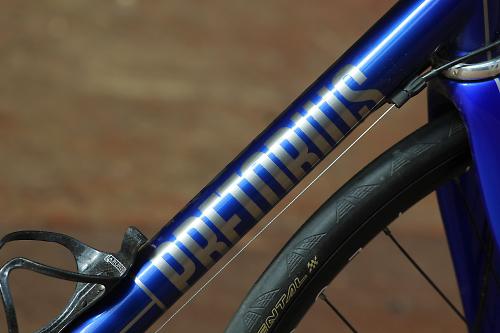
The Outeniqua's titanium alloy (3Al/2.5V) frameset is made up of predominately oversized tubing to provide the stiffness for what is to all intents and purposes a race bike. You can feel the benefits straight away as the Pretorius is probably one of the tightest titanium frames I've ridden especially at the front end thanks to the huge 44mm internal diameter head tube.
Pretorius supply the frame with a Chris King Inset 7 headset. By changing between the various baseplates you can run the frame with either a 1 1/8in standard fork steerer or the option that the London bike brand has gone for, an Enve disc 1 1/8in – 1 1/2in tapered version.
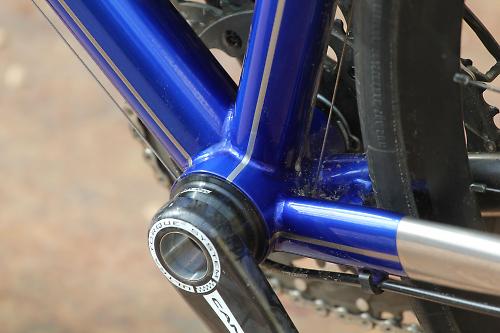
Increasing the head tube diameter for stiffness works in two ways. It provides a larger surface area to weld bigger diameter top and down tubes to and the tapered steerer is less flexible whether that's dealing with forces from the disc brakes or rider input. Using a constant diameter tube keeps a traditional to the frame.
Does it work? I'd say so. One of the descents on the above ride was a steep country lane with a tight right hander at the bottom. Nudging 59mph before hauling the brakes on hard did nothing to upset the Outeniqua as it continued to brake straight and true before tracking straight through the bend a little quicker than was probably sensible. It's not just high speed plummets that bring out this side of its handling either: sweeping turns and sharp direction changes also feel solid and direct.

The racy geometry plays a hand in this too, with relatively steep 73° and a 73.5° head and seat angles keeping the entire frame tight and nimble. Pretorius have added just 5mm to the standard Outeniqua's already short wheelbase to allow for the fitting of mudguards but it still responds like a race bike rather than a more traditional winter bike with its more sedate handling.
Pretorius have gone for the PF30 route at the bottom bracket which is similar to BB30, it uses the same bearing races in fact but instead of pressing them directly into the frame the PF30 places the bearings in cups which are in turn press fitted into the bottom bracket shell. The 2mm bigger inner diameter required for the cups means you get a bigger tube again providing more surface area for welding plus the fact that the bearings are running against the cups should mean better longevity for the frame. Hard efforts didn't feel to have any effect on the bottom bracket stiffness even on steep 25% gradients when I was putting out pretty much everything I had just to keep moving.
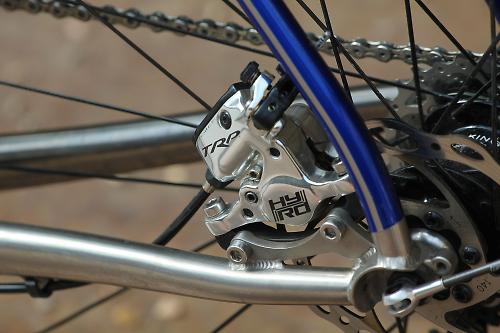
Tying everything together are the large down tube, and tapered top tube that changes diameter very subtly by just 4mm from a 38mm start at the head tube. I like the fact it looks beefy and solid, especially for a titanium bike without coming across as over the top.
From the saddle the Outeniqua is one of the stiffest titanium frames I've ridden, especially at the front end but thankfully the material properties manage to come through and take the harshness out of the ride. In fact even with Deda's massive 35mm diameter handlebars fitted it wasn't uncomfortable on rough roads.

The rear end is much more slender and though you certainly benefit in the comfort stakes over long distance. A common theme on titanium bikes is to curve the chainstays towards the chainset in a bid to allow some flex but the Outeniqua Disc's are relatively straight, in fact the only reason they curve at all is to make room for the disc and caliper judging by the rim braked version. The chainstays are curved for exactly the same reason and even though they are short at 407mm long (54cm frame) I didn't have any heel clearance issues.
The main point about the Outeniqua Disc, though, is that it's usable year without really making any major sacrifices anywhere. Being road.cc's unofficial 'road bike with disc brake' tester (I've reviewed seven so far in 2014) I'm certainly an adopter of them. Other than aerodynamics I can't see a situation where I would rather have caliper brakes over a disc. If like me you like to leave your braking a little late the consistent, modulated feel of discs is a huge bonus especially when you're using any form of hydraulic system.

While the Outeniqua comes as a frameset our build came with TRP's Hy/Rd cable/hydraulic mix system which are pretty impressive stoppers. Pretorius have chosen 140mm rotors front and rear and they really match the performance of the frame. You can carry more speed into bends or roundabouts without the fear of not having enough braking power to stop if you have to. Just as a note though I'd go for a 160mm on the front as I've found that the best overall combination.
I mentioned mudguards early on and this is another neat element of the Outeniqua; it can take full mudguards, albeit with a maximum of 23mm tyres, without looking odd without them thanks to maintaining the tight clearances. The rear dropouts have thread mounts and while the eagle-eyed of you will have noticed there are no such attachments at the fork, fear not. Pretorius provide 3D printed mounts to attach the guards. It keeps the frame looking clean and tidy when its not being used in the wet.

Our Outeniqua Disc came with a full Campagnolo Chorus mechanical build which worked beautifully especially once bedded in after a few miles. Should you want to go electronic from the start or as an upgrade at a later date Pretorius have a neat little solution to this: the cable stops are 3D printed also and can be removed when they aren't needed. The electronic shifting cables can then be passed internally exiting near each mech. You can see the little rubber grommets covering the exits in the pictures.
The rest of our build summed up the Outeniqua's all rounder intent with H Plus Son wheels on Chris King hubs, still pretty flash kit but solid performers that will stand up to daily abuse. The hubs are beautifully smooth and well sealed; handy as the Pretorius was a fair number of wet days over the test period. The Continental tyres are 25mm in width which is the biggest that the Pretorius will take without guards and they rolled nicely as did the wheels.
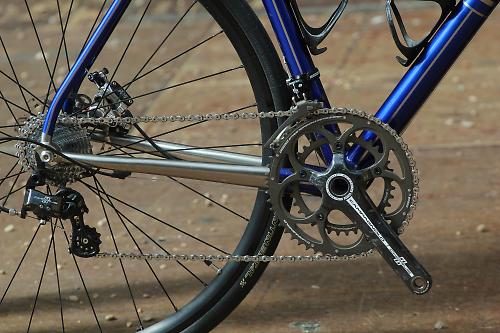
We also had a range of Deda finishing kit which was also decent without being super light or overly expensive showing in a way that Pretorius are confident in the frame's performance and don't feel the need to drape it in bling to take your eye off of an short comings.
So what's it going to cost you? £2,299 for the frame, fork and Chris King headset or £2,900 for a full custom job if you don't feel any of the six available off the peg sizes fit you. For price comparison the build we've got here would set you back around £4,600 and built up it weighs 8.5kg (18.7lb), pretty good considering the solid build as opposed to a full on weight weenie one. You'll also pay extra for the custom paint finish we've got here, it does look lovely in the sunlight though.
Conclusion
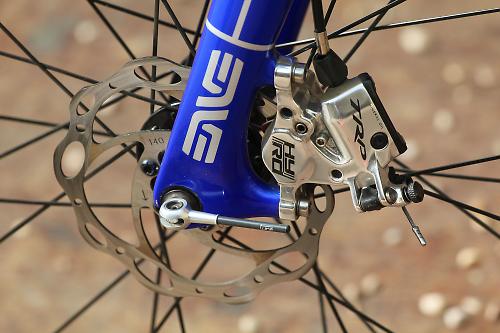
The Pretorius Outeniqua Disc offers a very fast, direct, stiff ride with about being as extreme as a full on race bike. It's an easy bike to ride whether you're tapping out the miles or riding it hard and above all its hugely comfortable.
Price wise it is expensive but that's not to say its overpriced. In fact it comes in around a similar price to other small-brand titanium and carbon frames we've tested.
The frame we've tested here may be custom, but it's not off the peg in the same way as a mass produced frame, either: there is a lot of attention to detail and it's beautifully crafted.
Think of it as an investment, with titanium's corrosion resistance and timeless look it could be the only bike you need for the rest of your cycling life.
Verdict
A race orientated frameset that's as fun to ride as it is comfortable, a blast whether you're going flat out or taking in the scenery.
road.cc test report
Make and model: Pretorius Outeniqua Disc frameset
Size tested: M
About the bike
State the frame and fork material and method of construction. List the components used to build up the bike.
*3Al/2.5V double butted tubing
*44mm Headtube
*PF30 Bottom Bracket
*Enve 11/8 – 1.5 tapered road disc fork
*Chris King Inset 7 (semi-internal) headset
*Compatible with mechanical and electronic groupsets
*3D printed removable cable stops
*Compatible with TRP HY/RD brakes
*Replaceable hanger
*Compatible with 23 & 25mm tyres (23mm with mudguards)
*Available as full custom or in 6 stock sizes; XS, S, M, M/L, L, XL
Test sample build -
Campag Chorus carbon groupset
H Plus Son rims with Chris King hubs
Deda 35 handlebars
Deda stem and seatpost
Selle Italia saddle
TRP Hy/Rd disc brakes
Continental 25mm tyres
Tell us what the bike is for, and who it's aimed at. What do the manufacturers say about it? How does that compare to your own feelings about the bike?
The Outeniqua is designed as a race orientated bike that will also be just as happy on an all day epic providing a fast, direct ride while maintaing comfort and stable handling. By adding discs and mudguard mounts it also becomes a year round, all weather bike.
Frame and fork
Overall rating for frame and fork
8/10
Tell us about the build quality and finish of the frame and fork?
Nicely built with tidy, neat welding and the painted finsh makes it stand out from the crowd.
Tell us about the materials used in the frame and fork?
The Enve fork is full carbon with a tapered steerer and disc caliper mounts while hte frame uses double butted 3Al/2.5V titanium alloy tubing.
Tell us about the geometry of the frame and fork?
Race orientated without being overly twitchy. Follow the link for the geometry table of the six of hte peg models, full custom option is also available.
http://pretoriusbikes.com/the-shop/framesets/pretorius-frames/outeniqua-...
How was the bike in terms of height and reach? How did it compare to other bikes of the same stated size?
As a medium the 54cm top tube and 53cm top tube is pretty normal. The rest of the measurements reflect this and overall the Pretorius fitted me like a glove
Riding the bike
Was the bike comfortable to ride? Tell us how you felt about the ride quality.
Yes, it's stiff but the titanium's naturally flex keeps the harshness at bay.
Did the bike feel stiff in the right places? Did any part of the bike feel too stiff or too flexible?
No, its all a good balance.
How did the bike transfer power? Did it feel efficient?
Very well indeed, its no explosive sprinting machine but lays the power down well at high levels of effort.
Was there any toe-clip overlap with the front wheel? If so, was it a problem?
No, there probably will be with guards though.
How would you describe the steering? Was it lively, neutral or unresponsive? Nicely weighted tuned more to the lively side but not overly so.
Tell us some more about the handling. How did the bike feel overall? Did it do particular things well or badly?
The short wheelbase and stiff front end makes the Outeniqua handle nicely taking fast bends and descents without any scary moments.
Which components had the most effect (good or bad) on the bike's comfort? would you recommend any changes?
The Deda 35 bars were borderline for rides of six or seven hours and I'd probably change to something with a little more flex.
Which components had the most effect (good or bad) on the bike's stiffness? would you recommend any changes?
The Enve fork is very stiff as were most of the components. It shows how comfortable the frame is when you can add parts like this and not ruin the ride quality.
Which components had the most effect (good or bad) on the bike's efficiency? would you recommend any changes?
We're starting to see lighter disc brake wheels come to the market which would make acceleration and climbing better but you'd be trading off the longevity of the wheel build here.
Rate the bike for efficiency of power transfer:
8/10
Rate the bike for acceleration:
8/10
Rate the bike for sprinting:
8/10
Rate the bike for high speed stability:
9/10
Rate the bike for cruising speed stability:
9/10
Rate the bike for flat cornering:
8/10
Rate the bike for cornering on descents:
9/10
Rate the bike for climbing:
8/10
The drivetrain
Rate the drivetrain for performance:
8/10
Rate the drivetrain for durability:
8/10
Rate the drivetrain for weight:
8/10
Rate the drivetrain for value:
7/10
Tell us some more about the drivetrain. Anything you particularly did or didn't like? Any components which didn't work well together?
The Campagnolo Chorus parts worked nicely with the frame and looked the business to. I especially liked the 53/36 chainset which feels a much better ratio than 50/34.
Wheels and tyres
Rate the wheels and tyres for performance:
8/10
Rate the wheels and tyres for durability:
8/10
Rate the wheels and tyres for weight:
7/10
Rate the wheels and tyres for comfort:
8/10
Rate the wheels and tyres for value:
8/10
Tell us some more about the wheels and tyres.Did they work well in the conditions you encountered? Would you change the wheels or tyres? If so, what for?
Solid performers that suit the all rounder attitude of the Pretorius.
Controls
Rate the controls for performance:
8/10
Rate the controls for durability:
8/10
Rate the controls for weight:
8/10
Rate the controls for comfort:
7/10
Rate the controls for value:
7/10
Tell us some more about the controls. Any particularly good or bad components? How would the controls work for larger or smaller riders?
On the stiff side but would suit bigger, more powerful riders.
Your summary
Did you enjoy riding the bike? Yes.
Would you consider buying the bike? Yes.
Would you recommend the bike to a friend? Yes.
Rate the bike overall for performance:
8/10
Rate the bike overall for value:
8/10
Anything further to say about the bike in conclusion?
Even though I've rated the components this is basically a frame and fork review and the overall score of 8/10 reflects that. The Outeniqua Disc is fun to ride whether you're out for an hour's blast or a day in the saddle and is easy enough to live with day in day out. For the money you are getting a performance bike that will adapt to chain gangs, sportives, audax even a bit of credit card touring plus during the week it makes a comfortable, well mannered commuter. N+1 is starting to look a little threatened.
About the tester
Age: 35 Height: 180cm Weight: 76kg
I usually ride: Whatever needs testing or Genesis Flyer, fixed of course! My best bike is: Kinesis T2 with full Centaur Red
I've been riding for: 10-20 years I ride: Every day I would class myself as: Expert
I regularly do the following types of riding: time trialling, commuting, club rides, sportives, fixed/singlespeed,
Since writing his first bike review for road.cc back in early 2009 senior product reviewer Stu has tested more than a thousand pieces of kit, and hundreds of bikes.
With an HND in mechanical engineering and previous roles as a CNC programmer/machinist, draughtsman and development engineer (working in new product design) Stu understands what it takes to bring a product to market. A mix of that knowledge combined with his love of road and gravel cycling puts him in the ideal position to put the latest kit through its paces.
He first made the switch to road cycling in 1999, primarily for fitness, but it didn’t take long for his competitive side to take over which led to around ten years as a time triallist and some pretty decent results. These days though riding is more about escapism, keeping the weight off and just enjoying the fact that he gets to ride the latest technology as part of his day job.
Latest Comments
- stonojnr 2 sec ago
the key is having a decent LBS, one you can trust to do the work, and not invent things to do, or start overcharging you, and not everyone has that...
- Aluminium can 28 min 59 sec ago
No sticker is required in the case of the empathy disabled. If you see someone in yoga wear getting out a wankpanzer it's clear they are crippled...
- ktache 1 hour 41 min ago
I run 10+14 on my summer tyres and 11+14 on my intermediates and full on winter muds. And I can feel differences as the week progresses.
- brooksby 1 hour 59 min ago
I think that you have it the wrong way around: the £10-15 lights on eBay (other marketplaces are available) are cheap copies of Lezyne's originals....
- Tom_77 2 hours 37 min ago
Does it happen outside the Moldavian Embassy? Or maybe it's the chip shop.
- David9694 2 hours 56 min ago
'Safety Is a Shared Responsibility, Says Traffic Officer Whose Tips Are Aimed 100% at Pedestrians and Cyclists
- Bungle_52 3 hours 58 min ago
We can't have that can we. Much better to risk killing vulnerable road users. Less damage to the cars.
- Bungle_52 4 hours 1 min ago
I've just had the outcomes from 4 reports I put in last week. 3 of them were for driving at me on my side of the road. Two I had to brake and...
- Cycloid 4 hours 20 min ago
I have seen this image several times and can see no scientific reason for the conclusion it supports. I have been unable to trace it's source....
- Rendel Harris 4 hours 44 min ago
Sounds massive, doesn't it, but whilst we should obviously be aiming for as little carbon release as possible that's the equivalent of what...


























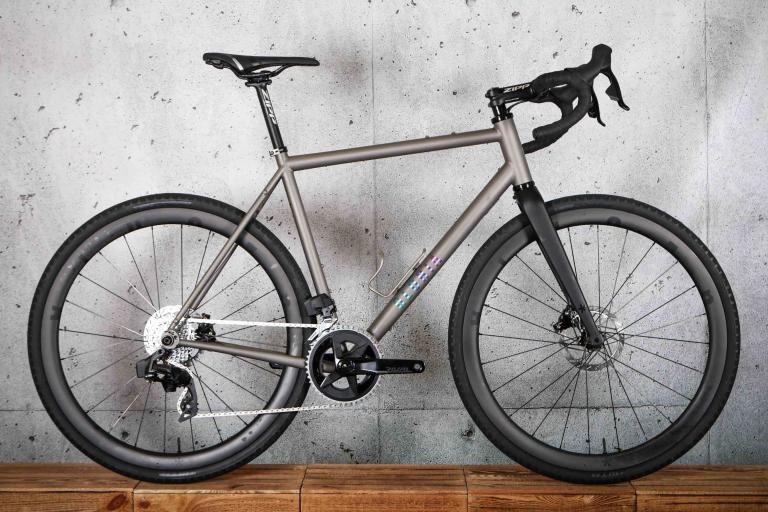
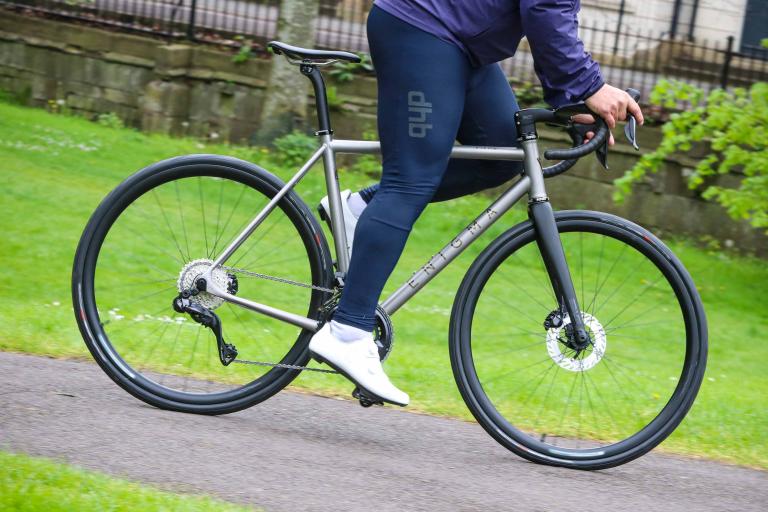
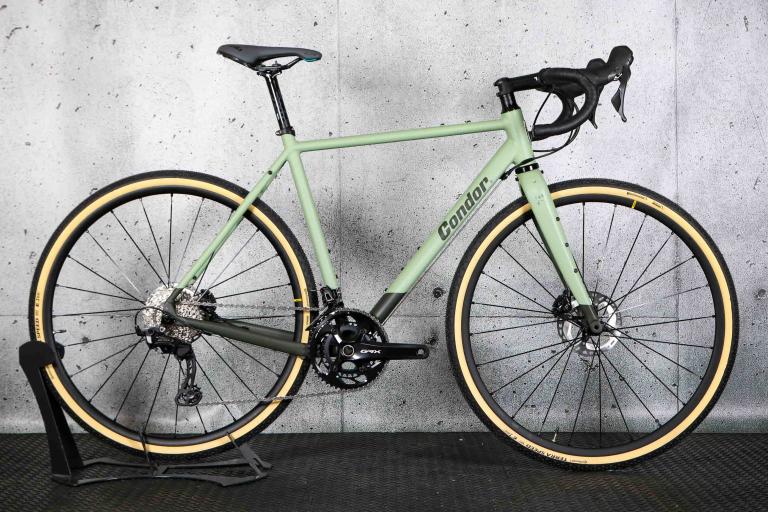
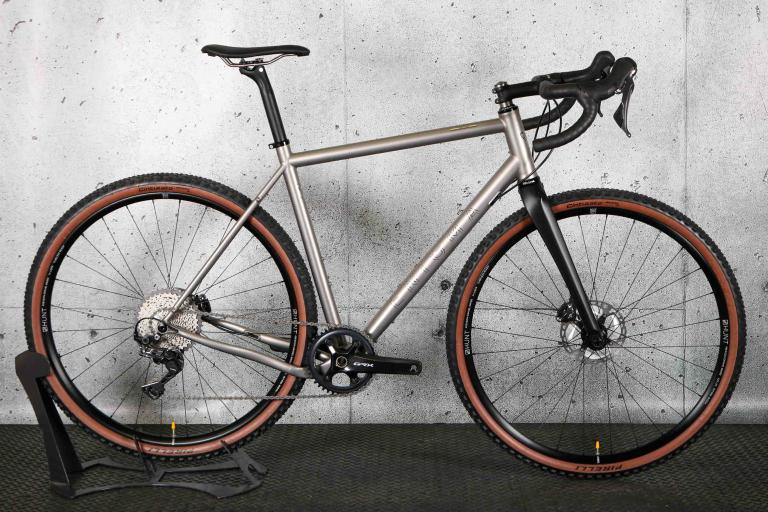
Add new comment
17 comments
..nearly forgot, although compound is important, so is the pressure and compliance of the tyre. Getting the surfaces to interlock as much as possible, and to not bounce and chuck all the normal force out of the window, are also key factors. Telling someone to choose the 'right' compound or else adjust their riding style comes across as a bit disingenuous to me. YMMV.
Fair enough, if that's what you want. Personally I have wanted wider tyres in the wet and cold, even a couple of mil, but that's just me maybe - 10% odd less pressure is welcome sometimes.
My point is that, for me, that certainly doesn't make it "the only bike you need for the rest of your cycling life" - just a really nice race-oriented road bike.... with a couple of small changes I just think it could be so much more.
But nobody is forcing you to change tyres, if you are intending to run it with guards spec it with 23mm's and just run them all the time. Never have I been riding in the wet and wished I had 2mm wider tyres, compound is where it's at or an adjustment in your riding style.
The point I'm trying to make is that if I wanted a bike that would take the worst weather in its stride and big tyres for low pressures or whatever the Pretorius wouldn't be on my list in the first place. If I wanted a fast, quick handling race orrientated bike that would run guards to stop me getting wet on a summers sportive or chain gang it would be.
What does this mean: 'Using a constant diameter tube keeps a traditional to the frame.'?
It would be interesting to know the builder's thinking on tyre clearance and the short rear end. One of the advantages of discs is that you can have massive tyre clearance if you want, an advantage not at all taken here. Such a short rear end on a bike which is meant for an occasional bit of rough stuff is a definite disadvantage I would have thought. At least 420mm chainstays wouldn't have any downside surely, preferably 425mm as on the Lynskey Sportive mentioned above.
Final carp - three grand for the custom job is barmy. £700 more than the off-the-peg one (which is already very expensive)? Why? My custom titanium Burls cost about a grand, albeit without the lovely Enve fork.
It is supposed to say "'Using a constant diameter tube keeps a traditional 'look' to the frame.'
What Pretorius have done is take their Outeniqua race bike and added discs to it, the ethos of the bike hasn't changed its still a race bike therefore the short rear end and overall wheelbase keeps it tight and engaging to ride. Just because a bike has had discs added to it doesn't all of a sudden become "meant for an occasional bit of rough stuff."
Same with the tyre clearance comments, why would you want bigger than 25mm on a race bike?
..because why force someone to change tyres as well as putting on the mud-guards ?
..maybe because when the weather is such that you need mud-guards, it's also good to have wider tyres running lower pressure for more grip and feel ?
..maybe because people say this about your bike ?
or
...both of which sort of made me think that it's not just a race bike.
..maybe because it's hard to think that a couple of mill added to the clearance probably would make any noticeable difference in a race and surely wasn't onerous to design in ?
Those would be some of my first thoughts anyway.
Further to some of the above comments about threaded BBs, normal headsets & clearance for 25mm tyres plus full guards, could I suggest having a look at the Lynskey Sportive Disc. It ticks pretty much all these boxes, it can even be set up for internal Di2 (but not internal mechanical).
I've had one for a year now as my winter / wet weather bike and really rate it. Just thrashed it round last weekend's Wild Wales route and it really excels on poorly surfaced roads and steep descents. Compared to carbon frames I've had there is a real air of indestructabity about it.
The only draw back is that compared to my R3 with DA9000 I find the Lynskey a bit less stiff laterally (although the down tube is massive so it's no noodle) and a bit heavier, so it doesn't fly up the steep hills like the Cervelo. FYI, my Lynskey has a Spot brand fork with alloy steerer, Ultegra 6700, Reynolds Stratos Pro wheels, full SKS guards & weighs in at 21lbs. If I could find a non-tapered full-carbon disc fork (with eyelets) and weighed it minus the guards I think it would be around 19lbs.
No one ever moaned about tyre clearance before a couple of pros used 25s.
Yeah, they did.
What I would like from a titanium frame, compatible with di2 as well as cable. All internal routing. Accepts 35mm tyres, hydraulic brakes and mudguard mounts, through axles and threaded bottom bracket. And doesn't cost two grand for a frame
oh my
future of bikes right there
totally awesome bike
i7 external headsets should be made law, none of this intergrating bollcks
Amen to that. It really annoys me that virtually all bike manufacturers are using a fundamentally flawed headset design on their frames at the moment, especially as I'm riding one that's stuffed due to a small error (made by the workshop that assembled the bike, but I have no means to prove it unfortunately) that would have had no detrimental effect on a frame designed for a proper headset.
Want!
(And I'm already lucky enough to own a Pretorius)
Tyre clearance is a joke.
It's a race bike that'll take full guards, what exactly are you expecting?
That is a /seriously/ nice-looking bike. Campagnolo+disc brakes, lovely. Hydraulics would be lovelier, but still...
Spot on, although i find the tyre clearances a bit odd.